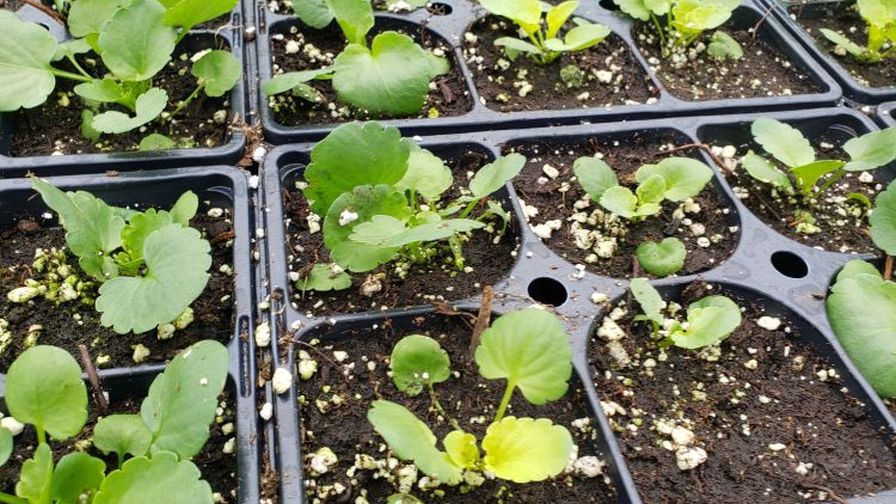Why Ammonium Toxicity Can Cause Chlorosis in Pansies

Ammonium toxicity in pansy; Photo: Jaden Gimondo, MSU Extension
Note: Information for this article comes from a blog post from Michigan State University Extension.
Ammonium toxicity in ornamentals occurs when too much ammonium is available in the substrate, and plants take it up excessively. Water-soluble fertilizers may contain more than one form of nitrogen such as nitrate (NO3–), ammonium (NH4+), and urea [CO(NH2)2]. Ammonium and urea (urea converts to ammonium [NH4+]) can result in ammonium toxicity during the winter and early spring when light levels and temperatures are low, and substrates are saturated, oxygen deprived and between 55 to 65°F.
During the early production season, bacteria that usually help convert ammonium to nitrate are not as active in cold substrates, which can lead to ammonium toxicity. While plant cells can store high levels of nitrate nitrogen without any harm, accumulating ammonium can damage cells. Therefore, acidic fertilizers such as 20-10-20 containing a high percentage of ammoniacal nitrogen should be avoided during cold and cloudy weather, especially in northern latitudes. Instead, nitrate-based fertilizers such as 15-0-15 should be used from November to March.
Fertilizers that are high in nitrate nitrogen and low in ammoniacal nitrogen are sometimes known within the industry as dark weather feeds. Additionally, ensure that plants are receiving adequate amounts of potassium, as it helps convert NH4+ to proteins, which lowers the foliar ammonium levels. Certain crops such as coleus, eggplant, lettuce, pansy, pepper, salvia, tomato, and zinnia are especially sensitive to too much ammonium.
To avoid ammonium toxicity, monitor the ammonium levels and use fertilizers with a balanced ratio of ammonium and nitrate. Adjust the pH of the substrate to help convert ammonium to nitrate and use soil amendments to reduce ammonium levels. Following these steps can prevent ammonium toxicity and promote healthy plant growth.
Visual symptoms of ammonium toxicity begin as interveinal or marginal leaf chlorosis, chlorotic blotches or pale lime green foliage that mimic an iron deficiency. In mature plants, either upward or downward curling of leaf margins and even the floral buds can occur. Roots may also be affected with fewer roots forming and tips becoming necrotic with an orange-brown color. As the toxicity progresses, necrosis follows chlorosis on older leaves. Seed germination and establishment can be delayed as young leaves are more susceptible to ammonium toxicity and typically develop interveinal chlorosis. Similar to older plants, the margins of leaves will curl up or down depending on the species.
For a recent example of how one grower in Michigan worked with Michigan State University to address a concern in this area, check out this post on canr.msu.edu. The post also includes tips on correcting and preventing ammonium toxicity.









